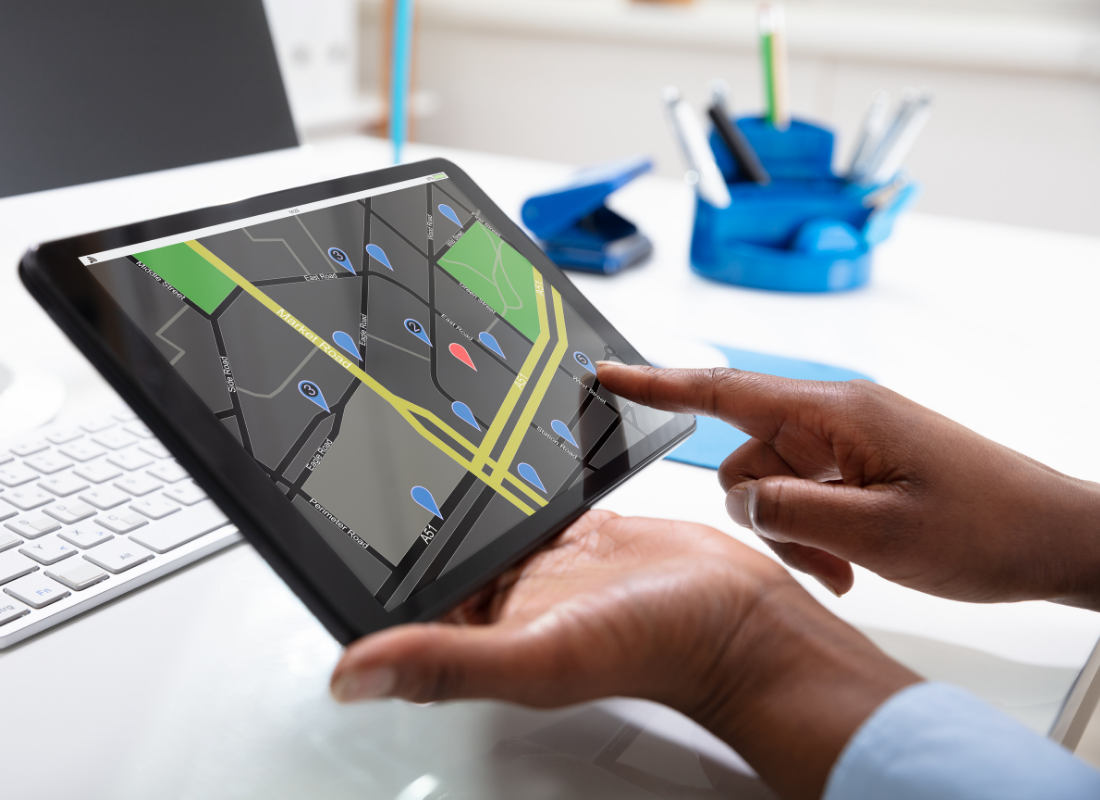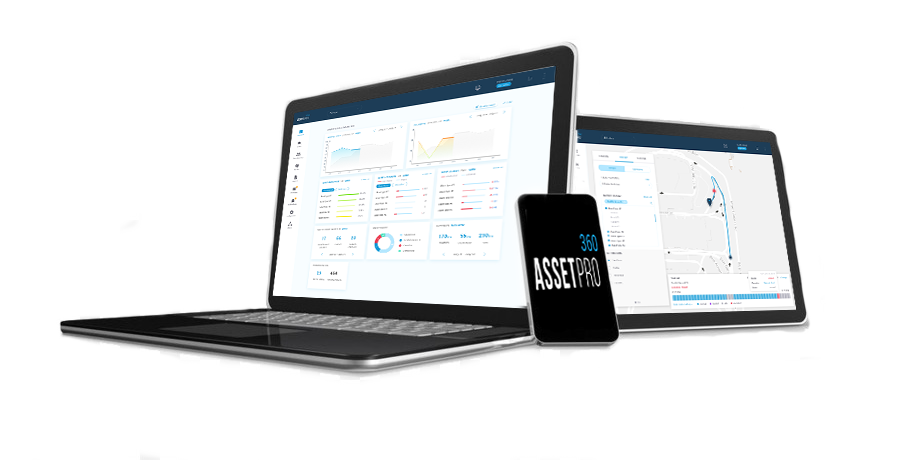The Ultimate Guide to Fleet Data and How to Use It
In this age of information, knowledge can be power. As new technologies continue to be created for the purpose of providing more and more information, there can sometimes be a point when too much knowledge becomes overwhelming and no longer helpful. When it comes to your fleet, you are told you need to be collecting data in order to optimize, streamline and maximize your fleet investment. Great. But what does that actually mean? What data do you actually need to collect, what data simply doesn’t matter, and what does it look like to optimize, streamline and maximize your fleet?
Being able to understand what data you should be collecting, why you are collecting it and how it impacts your operation are the first steps to breaking through the buzzwords and cutter of data.
That’s why we are going to provide you with a comprehensive list of the most important data you should be collecting from your fleet and how to use it.
From Equipment:
Daily Hour Meters
What It Is: Hour meters are the most common form of data collected by fleet managers. It is simply the  number of hours that vehicle or piece of equipment was used in a day.
number of hours that vehicle or piece of equipment was used in a day.
Why It Matters: Knowing when and how much your vehicle is being used is crucial for determining proper maintenance schedules, peak and valley usage times and if your operators are using the vehicle as instructed.
The number one reason for having an asset tracker is to locate your asset! Whether you need to track down a vehicle because it’s due for service or you simply need to use it, having the ability to immediately pull up an asset’s location significantly cuts down the time your employees may spend trying to find a vehicle that was left somewhere it wasn’t supposed to. It’s simple, the quicker you locate the asset, the sooner it can be addressed or put to use.
Results From Collecting This Data:
Accurate Maintenance Schedules: By knowing exactly how much your vehicle is being used, you can start implementing maintenance schedules that are determined by usage versus a calendar system. Attend vehicles that have been used more, and don’t waste a technician’s time and money on vehicles that have been used less.
Fleet Right-Sizing: By tracking when and how often a vehicle is used, you can then determine if an asset is being over or under utilized. For assets that are underutilized, you can redistribute to another location or completely eliminate it from your fleet if it is not necessary.
Operator Accountability: If you track actual vehicle usage time, you can confirm if your operators are performing their duties as instructed or if they are sitting idle on the job. More visibility increases operator compliance resulting in greater productivity.
_________________________
Idle Time (vehicle on while it’s not being used)
What It Is: This is the amount of time a vehicle is on but not being actively used. collect the data of when the vehicle is on and consuming battery or fuel but it’s not moving, therefore not being used.
Why It Matters: Vehicles that are left on but not being used result in extra battery usage or fuel consumption that could have been avoided. Being able to identify vehicles that have been sitting idle for an extended period of time allows you to take action by manually shutting off the vehicle or installing a device that will shut it off for you based off of idle time.
Results From Collecting This Data:
Reduced Fuel Costs: Reducing the amount of time a vehicle sits idle will, in turn, reduce unnecessary fuel consumption it incurred while sitting idle.
Longer Battery Lifetimes: A battery’s lifetime is directly correlated to its amount of usage. By shutting off electric vehicles that aren’t being used, you can decrease the battery’s usage and in turn, extend the amount of life you get out of that battery.
_________________________
GPS Location (real-time tracking)
What It Is: The surveillance of location through the use of the Global Positioning System (GPS) to track the location of an entity or object remotely.
Why It Matters: There are a lot of moving parts to an operation and it can be hard to keep track of each vehicle. Knowing where your assets are at all times can protect against theft, ensure they are being used in the right places and can make it easier for maintenance technicians to locate vehicles in need of attention. To learn more about the importance of tracking your vehicle’s location you can read our blog about asset tracking. 
Results From Collecting This Data:
Reduce Theft: The quicker you know of an asset that could have been stolen, the higher your chances are of recovering that asset.
Reduce Maintenance Technician Costs: The last thing you want to do is pay maintenance technician to spend his/her time searching for a misplaced asset. Using GPS to locate an asset, allows your technician to get to work quickly and move on to the next asset for a more efficient maintenance process.
Optimize Vehicle Routes: GPS location data is crucial for a fleet manager to use when determining the most optimal routes that can result in less fuel and power consumption.
_________________________
Vehicle Speed
What It Is: The speed at which a vehicle is being operated.
Why It Matters: Knowing a vehicle’s speed can help you determine optimal vehicle speeds for less fuel or energy consumption while also allowing you to identify operators that could be misusing vehicles, putting their lives and those around them at risk.
Results From Collecting This Data:
Improve Workplace Safety: Hold the operator’s more accountable for their equipment usage and identify operators that may need additional training before returning to the job. To learn more about the cost of workplace accidents, download our infographic.
Reduce Fuel Costs: Identifying the optimal speed that allows for productivity while also using the least amount of fuel, promotes a more efficiently run operation at less cost.
_________________________
Load Weight
What It Is: The total weight of a load a vehicle holds.
Why It Matters: Each of your vehicles has a set load limit that determines the amount they can safely carry without compromising the asset. If you overload an asset, it can result in higher fuel costs, costly damage to your vehicle and unnecessary accidents if the load were to be dropped.
Results From Collecting This Data:
Prevent Accidents: If a load that was too heavy for a piece of equipment fell or was dropped, it not only puts the operator at danger but also those around him/her. Tracking the load weight allows you to determine if operators are remaining compliant and stop avoidable accidents if they are not.
Reduce Fuel Costs: A heavier load results in additional energy to be consumed to transport it. If the load exceeds the limit of that vehicle, it can overload the engine, burning up additional fuel resources than necessary. By staying compliant to allowed load weights, you can better predict and plan for fuel costs.
Protect Your Asset: Excessive loads can result in accidents that can damage your asset or can overload the vehicle causing internal damage. By staying compliant to the manufacturer’s load limit, you can ensure fewer repair costs and promote a healthier asset.
_________________________
From Battery
Battery Temperature
What It Is: The internal temperature of the battery.
Why It Matters: Monitoring the battery temperature is crucial to protecting your battery. If a battery overheats it means it was not discharged properly, which can destroy the battery completely or decrease its lifespan. It is also important to note that the external temperature in which the batteries are being stored can impact the batteries performance and durability.
Results From Collecting This Data:
Increased Battery Lifespan: A battery’s lifespan is directly correlated to how well it someone follows proper battery usage procedures. By monitoring your battery’s internal temperature, you can ensure proper discharging procedures are being followed in order to improve the battery’s overall lifespan.
For additional tips on how to extend your battery’s life, check out our guide here.
_________________________
Battery Water Levels
What It Is: Conventional lead-acid batteries contain a liquid “electrolyte” which is a mixture of sulfuric acid and water that is crucial to the charging and discharging process.
Why It Matters: Water levels that are both too low and too high can cause damage to your battery. If water levels are too low, there may not be enough water to cover the plates before a charge. This puts the battery at high-risk for overheating, running completely dry and completely destroying the battery. If water levels are too high, this can cause an overflow in the battery, which can lead to damages and acid dilution.
Unsure how to properly water your battery? Read our blog here on the importance of battery watering.
Results From Collecting This Data:
Increased Productivity: Whether you over or under water your battery, it can decrease the functionality of your battery. A better performing battery means increased productivity and less downtime.
_________________________
What to do with the data collected?
So now that you know what data you should be collecting, how can you collect it, and what actions should you take to experience the expected results? Not only would collecting the data manually be time-consuming, but it would also be impossible in some cases. Using a telematics device to extract the data from your assets can be a great option for organizations looking to gain more information about their fleet, how it’s being used and how it can be improved.
The second step is integrating your telematics device with a business intelligence platform that can display the data as an accessible, easy-to-read report. There’s no point in collecting this much data if all you receive are numbers in a spreadsheet. In order to make better-informed changes for your fleet, you need your data in a digestible format, that provides clear instructions on next steps.
_________________________
 Access Control Group is proud to offer comprehensive line telematics and battery management devices that can collect as little or as much data as you’d like to gather from your fleet. Each of our devices connects with our cloud-based application, AssetPro 360, to display intuitive reports and alerts that can be accessed anytime and anywhere, giving managers complete visibility of their entire operation from the palm of their hand.
Access Control Group is proud to offer comprehensive line telematics and battery management devices that can collect as little or as much data as you’d like to gather from your fleet. Each of our devices connects with our cloud-based application, AssetPro 360, to display intuitive reports and alerts that can be accessed anytime and anywhere, giving managers complete visibility of their entire operation from the palm of their hand.
If you want to learn the average cost savings when operations implement telematics systems, check out our breakdown here.
Telematics systems are what you make of the data it provides. Already have a telematics system in place, but you are not experiencing these results? Check out 5 reasons your telematics systems isn’t working for you!
If you’d like to see how Access’ telematics systems have impacted an organization first-hand, check out one of our customer’s success stories.

